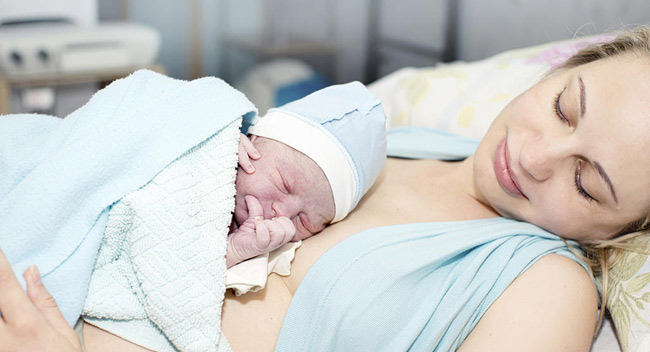Neonatal Abstinence Syndrome (NAS): Parent's Physical Closeness of Significance

Consumption of opiate or narcotic drugs such as heroin, codeine, oxycodone (Oxycontin) methadone or buprenorphine by a pregnant woman can lead to Neonatal abstinence syndrome in a newborn.
A pregnant woman who consumes alcohol, opiate or narcotic drugs such as heroin, codeine, oxycodone (Oxycontin) methadone or buprenorphine passes these substances through the placenta to the baby in the mother's womb. The baby becomes addicted along with the mother. At birth, the baby is still dependent on the drug. Because the baby is no longer getting the drug after birth, symptoms of withdrawal may occur.
Common Symptoms
The symptoms of neonatal abstinence syndrome depend on:
- The type of drug the mother used
- How the body breaks down the drug
- How much of the drug she was taking
- How long she used the drug
- Whether the baby was born full-term or early (premature)

Symptoms often begin within 1 - 3 days after birth, but may take up to a week to appear.
Symptoms may include:
- Blotchy skin coloring (mottling)
- Diarrhea
- Excessive crying or high-pitched crying
- Excessive sucking
- Fever
- Hyperactive reflexes
- Increased muscle tone
- Irritability
- Poor feeding
- Rapid breathing
- Seizures
- Sleep problems
- Slow weight gain
- Stuffy nose, sneezing
- Sweating
- Trembling (tremors)
- Vomiting
Diagnosis
Tests that may be done to diagnose withdrawal in a newborn include:
- Neonatal abstinence syndrome scoring system, which assigns points based on each symptom and its severity. The infant's score can help determine treatment.
- Toxicology screen of first bowel movements (meconium)
- Urine test (urinalysis)

Treatment
The goal of treatment is to prescribe the infant a drug similar
to the one the mother used during pregnancy and slowly decrease the
dose over time. This helps wean the baby off the drug and relieves
some withdrawal symptoms.
Breastfeeding may also be helpful.
A new research to be presented at the Pediatric Academic Societies (PAS) 2016 Meeting suggests a key way to easing the opioid withdrawal symptoms of Neonatal Abstinence Syndrome (NAS) by ensuring parents to spend plenty of time at the baby's bedside during treatment. It is hypothesized that the skin-to-skin contact during breastfeeding plays a role, with some prior research showing that having parents "room-in" or share a hospital room with babies undergoing NAS treatment decreases the need for pharmacologic therapy.
Mothers with substance abuse disorders should be encouraged to be involved in their infant's care while the newborn are being treated for withdrawal symptoms. Parents, too need to be educated on the benefits of parental presence to reduce NAS symptoms and to identify potential barriers to being at the infant's bedside, such as transportation and childcare.
Ref :
